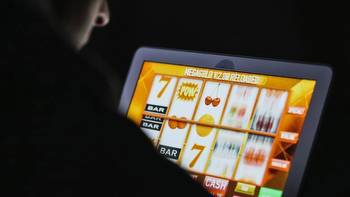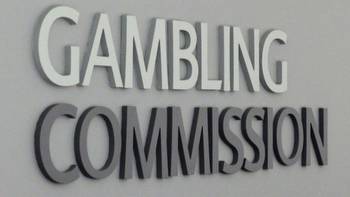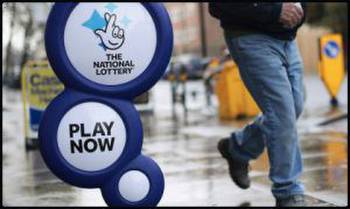Changes in the gambling landscape
Following the publication of our latest Industry Statistics, we are reflecting on the shape and size of the gambling industry in Great Britain - including the impact of macro trends on gambling behaviours and the impact of the Covid-19 pandemic.
Today approximately 15 million people gamble on products licensed under the Gambling Act 2005 in Great Britain, around the same number of people who have visited a museum or gallery in person at least once in the last year, according to the Government’s Participation Survey 2021 to 2022 annual report (opens in new tab).
It is important not to always consider the gambling sector as a uniform sector – from an industry or consumer perspective.
The gambling sector we regulate comprises a diverse range of products used by a wide range of consumers. Consumers play on different products, for different experiences, in person and online – sometimes at the same time. Our research into why people gamble shows it can be an opportunity to socialise or a moment of ‘me time’. It can be a niche activity, or something engaged in by the mainstream.
It is also impacted by the context around it. Sometimes this is by adjacent sectors such as those that are also classed as gambling, like the National Lottery, or products that have gambling-like mechanics such as loot-boxes. Sometimes it is the macro trends that impact everything around us, such as the Covid-19 pandemic or the current cost of living crisis. This can make it a complex landscape to unpick or generalise, but certain recent trends and risks driven by the nature of gambling products are clear.
Trends in participation and spend on gambling
The overall number of people gambling, and the associated Gross Gambling Yield (GGY) had been relatively static up until the start of the Covid-19 pandemic in 2020.
Headline level participation for products under the Gambling Act 2005 had been stable at around 32 percent of the adult population between 2017 and 2019, and for a comparable period (2016-17 to 2018-19) GGY increased by 4 percent. It was clear that gambling, with the exception of bingo, was more popular amongst men than women, as it was when the Gambling Act 2005 was introduced. The age group most likely to participate in gambling, was the 25 to 34 year old group.
During the pandemic, GGY relating to products under the Gambling Act 2005 fell by around 16 percent for the year to March 2021. The pandemic also made the difference between the number of men and women gambling much smaller - female gambling participation maintained its level while male participation dropped. In 2021, we saw that certain activities were more popular amongst females than males including society lotteries, scratchcards, fruit and slot machines in arcades and the National Lottery instant win games. The rate of gambling by the 25 to 34 year old group decreased significantly to levels seen amongst other age groups.
Since Covid-19 restrictions were lifted in 2021 and products and opportunities to gamble are available to consumers again, the overall percentage of the adult population who gamble remains lower than it was pre Covid-19 (28 percent). However, there are signs of a return to gambling amongst younger age groups aged 16 to 24 and amongst males gambling in retail. Industry GGY in 2021-22 for products under the Gambling Act 2005 is just 2 percent below what it was pre-pandemic (2019-20).
The move towards online gambling
The movement of consumers to online has been a gradual and consistent trend which continued through the pandemic, but spend appears to have increased more quickly than the increase in consumers.
The biggest change in the gambling landscape is a shift to online play, reflecting our lifestyles in general. Technology and globalisation have meant that gambling is no longer confined to opening hours and largely local events, but instead a 24 hours 7 days a week opportunity and global event-driven marketplace.
With 94 percent of United Kingdom (UK) adults having access to the internet in 2021 (PDF) (opens in new tab), it is not surprising that there has been a gradual switch from people gambling in person to choosing to gamble online. This mirrors changes seen in other sectors such as the increase in online grocery shopping (opens in new tab) or the rising popularity of digital-only banks (opens in new tab).
In September 2022, data from the Gambling Commission's quarterly telephone survey saw the proportion of adults gambling online (18 percent) equal the proportion of people gambling in person (18 percent) – whereas five years before in person rates were approximately double online participation rates. Despite the increase, the online gambling participation rate has not yet reached the level of in person participation before the pandemic, which was 24.4 percent in 2019.
The pandemic period saw a shift from retail to online play for the National Lottery. But for products under the Gambling Act 2005, the trend of a long-term gradual increase in online participation, rather than a spike, continued. The increase seen during the period was also driven mainly by women rather than men – from 13.2 percent in September 2019 to 17.2 percent in September 2022. Male participation has been static for the last four years.
Likewise there has been an increase in the share of GGY generated from online gambling - from 42 percent of GGY in 2015-16 compared to 61 percent in 2021-22 (excluding the National Lottery). In terms of product, there has been significant growth in the GGY generated by online slots over the same period from nearly £1.6 billion in 2015-16 to nearly £3.0 billion in 2021-22. The rate of increase in spend has always been higher than that of participation.
The popularity of retail gambling
Whilst the popularity of gambling in person has declined over time, it remains a significant part of the sector and is showing signs of recovery following the pandemic.
Two of the most popular gambling activities in 2007 were horse racing (in person, 17 percent of UK adults (opens in new tab) and slot machines (at venues, 14 percent of UK adults). Even by 2018, the Health Survey for England 2018 (opens in new tab) showed that the proportion who bet on horses in retail was lower at 8 percent, while the in person slot machines participation figure was 6 percent.
Along with the decline in retail participation, the level of GGY has also decreased - retail betting and bingo saw decreases in GGY of 36 percent and 44 percent respectively between 2015-16 and 2021-22. However, retail is still a significant contributor to the level of gambling activity, retail betting on its own accounted for 20 percent of the total GGY in 2021-22 (excluding the National Lottery).
Additionally, while there were concerns from the industry that the pandemic would have a significant negative impact on the retail landscape, in person participation in gambling has increased in September 2022 compared to September 2021 particularly amongst males and younger adults up to the age of 24 years old.
Online gambling as a digital sector
Online gambling is firmly part of the wider digital eco-system in terms of consumer expectations and operator delivery.
Rather than the clear distinction of a retail premises, gambling, and in particular online, is now just another digital sector.
Part of the change is driven by a consumer expectation of frictionless play that matches experience in other sectors. This is shown most clearly in the move to mobile. Ofcom data shows that adult internet users in the UK spend four hours online per day (PDF) (opens in new tab), with three of those hours spent on smartphones. Data from the Commission’s online tracker survey in 2021 shows that 60 percent of online gamblers have used a mobile phone to gamble on.
Digital has transformed product delivery, in terms of speed and volume of products to market and the potential for non-traditional operators to get involved in the sector. Mobile technology has enabled the transformation of traditional ‘destination gambling’ (like betting and bingo) to function in a similar way to instant win games in terms of ease and/or convenience of play. In 2021, our online survey revealed that three in ten online bettors had bet in-play in the last seven days, with a further 30 percent of online bettors having done so in the last four weeks.
Digital has also transformed the way in which operators engage with consumers, whether that is as a brand or as how they apply marketing, in a personal, targeted way. This is becoming more refined and increasingly data-powered every year. Consumers crave more personalised brand relationships and experiences across channels, with nearly half of Great British consumers surveyed stating they would like it if recommendations were better tailored to what they like and are interested in. This can also impact young people who engage in similar spaces even if they can’t transact. Increased personalisation can also bring risk to vulnerable individuals.
The sector supply chain reflects this too, growing in complexity and including the likes of big data suppliers, test houses, authentication and fraud detection and advanced human and/or machine interfaces.
It is also worth reflecting an additional consumer perspective: that the removal of environmental barriers of retail gambling has impacted the visibility and convenience of gambling behaviour. It can be done privately without peer judgement or intervention.
Problem gambling and gambling harms
Significant numbers of people continue to encounter issues with their gambling.
While the gambling landscape has changed fundamentally since the Gambling Act 2005 as we have described, the headline rates for problem gambling have been static in recent years.
Within those numbers we know that some people are more likely to experience harm than others (opens in new tab), including those who engage in multiple activities, men, those with probable mental health issues and players with the highest gambling expenditure. Whilst adults may be in a vulnerable situation at any age, young adults may in particular be additionally vulnerable to gambling related harms due to a combination of biological, situational and environmental factors. In a 2018 analysis of the Avon Longitudinal Study of Parents and Children (ALSPAC) (PDF) (opens in new tab), young adults were found to be most at risk of falling into problem gambling around the age of 20 to 21. This is a time when many young adults are adjusting to new freedoms such as moving out of home and managing their own finances.
Show updates to this content
No changes to show.






























